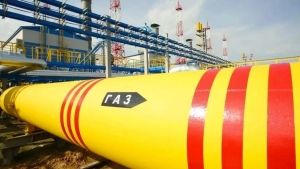
The meeting scheduled for August 15 between the leaders of Russia and the United States is considered very important not only in the political arena but also for the global financial system. This was reported by Zamin.uz.
The outcomes of this meeting are expected to influence oil, gold, exchange rates, and stock prices. Experts are presenting their forecasts regarding these four financial instruments.
In the oil market, in recent weeks, the price of Brent crude oil has fluctuated based on investor sentiments regarding statements made by Donald Trump and secondary sanctions against countries like India and China that purchase Russian oil. At the end of July, the oil price exceeded $73 per barrel, but as information about the presidential summit increased, prices fell.
On August 12, the price of Brent oil on the London exchange dropped to $66 per barrel. There is a possibility of a short-term rally in prices due to the potential easing of pressure on Russian oil, but the risk of a decline remains due to the potential increase in supply in the medium term.
The price of gold reached a historic record of $3534.1 per ounce on August 8. This is related to the US imposing tariffs on gold imports.
In 2025, the price of gold is expected to stabilize around $3200–3300 per ounce due to stable purchases by central banks and global uncertainties. Gold will continue to hold its significance as a protective asset for investors, with ETF flows and changes in physical demand also taken into account.
In the currency market, the easing of sanctions against Russia could lead to the strengthening of the ruble. However, there is also a possibility of increased capital outflow, especially if external accounts are restored.
This situation may increase fluctuations in the ruble exchange rate in the short term. Therefore, it is crucial to manage risks, hedge, and ensure liquidity reserves.
In the stock market, the lifting of sanctions against Russia is not easy, as many restrictions are imposed by the European Union. Nevertheless, international companies in the energy and logistics sectors may benefit from changes in their stock directions.
The restoration of supply-demand chains, as well as investments returning to insurance and transportation sectors, may support prices. Emotions will run high in the news before and after the summit.
Decisions should only be made based on concrete information. In the oil market, supply and inventory reports, central bank purchases and tariff policies in gold, the rhetoric of sanctions in currencies, and capital movements, as well as earnings forecasts by sector in stocks will be key factors.
Most importantly, it is essential to diversify risks considering various scenarios. Regardless of the outcome of the meeting, markets will be very sensitive to short-term changes.
Therefore, a strategic approach and long-term plans are always the key to success







